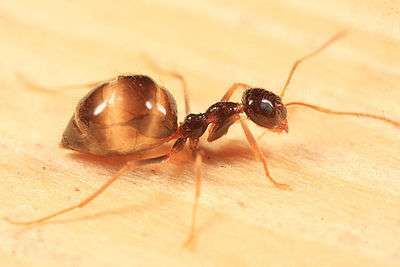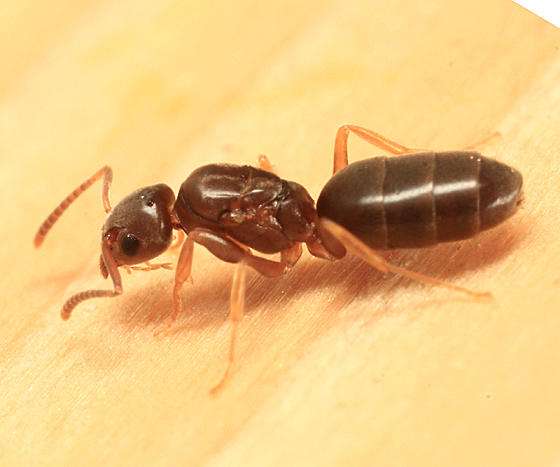
The winter ant, Prenolepis imparis, constructs extensive underground nests. During the hottest months of the year, colonies will isolate themselves in their nests and survive for months in the deepest, coolest chambers. Prenolepis imparis aggressively forages over most of its range, often during times of year when the temperature is much lower than what other ant species can survive.
Geographical Extent
The majority of the US is home to Prenolepis imparis, also referred to as false honey ants. Their range extends to Mexico in the south and southern Ontario in the north. Native to the Nearctic region are false honey ants.
Habitat
False honey ants can be found living in wooded regions, sand and clay-rich soil, and on occasion, under logs and rocks. Nests are constructed by workers underground. They construct their nests in shaded locations close to tree trunks. The tubes in the nests frequently lead nowhere. False honey ant nests are quite deep, extending down to 3.6 metres. The nests descend so deeply to keep the environment cool. Compared to the northern regions of their range, the nests in Florida are deeper.
Physical Description
Workers of false honey ants measure 2.5 to 3.5 mm in length. Queens are around 8 mm long. The length of a male ant is 3–4 mm. They range in hue from mild to dark brown. Males are black, while queens have a reddish-brown tint. Frequently, the head and belly are darker than the middle. Their bodies have an hourglass form. Ants that reproduce have wings.

Food Habits
False honey ants are omnivorous generalists who like meals high in proteins and lipids. Workers consume sap-dripping flowers, honeydew, rotting fruit, and excrement from arthropods, earthworms, and galls.
Reproduction
The species known as false honey ants is polygynous. Queens all produce eggs. Multiple females mate with one man. This species of ant is the first ant in North America to swarm in the spring for mating.
Once the queen’s ovaries are fully developed, a single brood is born in late August or early September. Both reproductive and workers make up the brood. The reproductive will depart the colony in the early spring after overwintering in preparation for their mating flight. The reproductive gather in swarms for mating. Swarms frequently congregate on plant life and tree trunks.
Lifespan/Longevity
For one to two years, workers live. Colonies can have anywhere between 560-10,000 workers. Colonies exist for seven to nine years.
Care
Queen Fully claustral foundation
Both monogyne and polygyne. Either Monogyne or Polygyne can describe them.
From egg to employee, on average: The average time for slow species is two months from egg to maturity. occasionally even 3 [/size] [/color]
Recommended range: 65 to 75 F.
The ideal humidity is close to damp clays and soils in deep chambers.
Favorite Foods: Workers consume honeydew, floral secretions, sap flows, gall exudates, earthworms, arthropods (often as carrion), and ripe or rotting fruit as food.
Information on hibernation: P. imparis has a set estivation period but does not hibernate. Most workers (on average 78%) were in the “replete” state, which appears to have been an adaptation for this estimation. Eggs are hatched and raised during estivation, and new workers appear throughout “winter.”
In north Florida, the ant exclusively forages during the winter and is underground for seven to eight months.
Rating for difficulty: Establishing an ant colony with P. imparis is not too difficult. To improve the likelihood that they will establish a robust colony, it is advised to group at least two queens together in a healthy starting habitat. You can give the newly married queens a little sweet liquid at first, but they won’t need feeding again until the first workers show up in a few months (estimated mortality rate in the wild is as high as 95%/100%). It is crucial to understand that succeeding generations of workers won’t develop from eggs to workers in the same amount of time as the first. Like other queens, P. imparis queens are susceptible to disturbance. They will swiftly abandon their eggs if they are disturbed while they are in the foundation stage. This makes it crucial to protect them from wind, light, and tremors. These queens are not as well suited for that type of habitat if you are used to keeping other queens where you can leave them outside in the open without worrying.
Rating for bite or sting: neither bite nor sting.
Table





